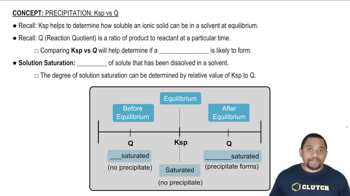Ch.23 - Organic and Biological Chemistry
Chapter 23, Problem 127
What are the names of the sugars in DNA and RNA, and how do they differ?
 Verified step by step guidance
Verified step by step guidance1
Step 1: Understand that DNA and RNA are nucleic acids, which are polymers made up of nucleotide monomers. Each nucleotide consists of a sugar, a phosphate group, and a nitrogenous base.
Step 2: Identify the sugar present in DNA. The sugar in DNA is deoxyribose, which is a five-carbon sugar (pentose) with the chemical formula C5H10O4.
Step 3: Identify the sugar present in RNA. The sugar in RNA is ribose, which is also a five-carbon sugar (pentose) but with the chemical formula C5H10O5.
Step 4: Compare the structures of deoxyribose and ribose. The key difference is that deoxyribose lacks an oxygen atom on the 2' carbon, hence the name 'deoxy' (meaning 'without oxygen').
Step 5: Summarize the difference: DNA contains deoxyribose, which has one less oxygen atom than ribose, the sugar found in RNA. This structural difference is crucial for the distinct functions and properties of DNA and RNA.
Key Concepts
Here are the essential concepts you must grasp in order to answer the question correctly.
Nucleotides
Nucleotides are the building blocks of nucleic acids like DNA and RNA. Each nucleotide consists of a sugar, a phosphate group, and a nitrogenous base. The sugar component is crucial as it determines whether the nucleotide is part of DNA or RNA, influencing the structure and function of the nucleic acid.
Deoxyribose vs. Ribose
The primary difference between DNA and RNA sugars lies in their structure. DNA contains deoxyribose, which lacks one oxygen atom compared to ribose, the sugar found in RNA. This structural difference contributes to the stability of DNA and the reactivity of RNA, affecting their roles in genetic information storage and protein synthesis.
Recommended video:
Guided course

Ksp vs Q in Precipitation
Function of Sugars in Nucleic Acids
The sugars in DNA and RNA play a vital role in the overall structure and function of these molecules. In DNA, deoxyribose contributes to the double helix structure, providing stability for long-term genetic storage. In RNA, ribose allows for more flexibility and reactivity, which is essential for its role in protein synthesis and various cellular functions.
Recommended video:
Guided course

Functional Groups Example
Related Practice
